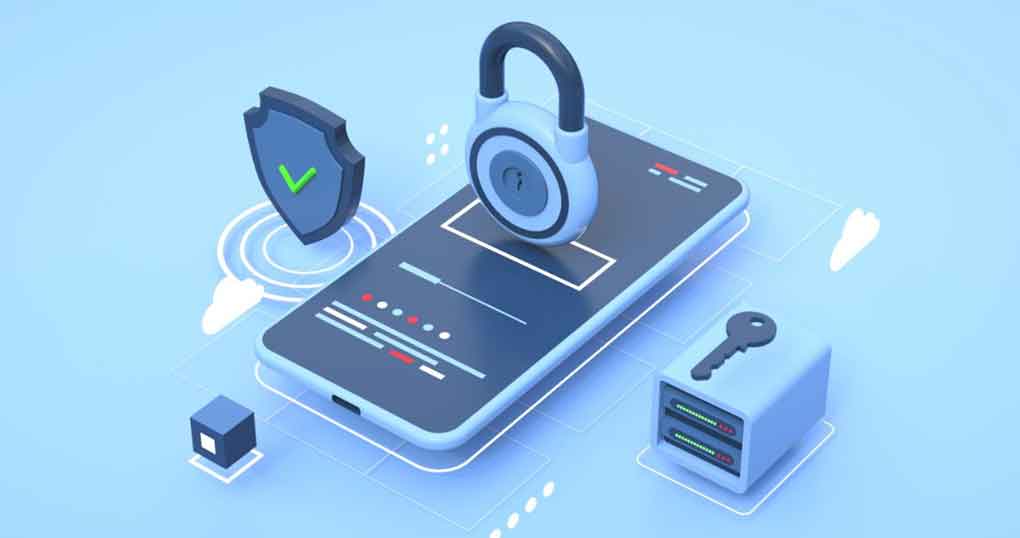In the fast-moving realm of cybersecurity, a rising trend is Zero Trust Security. This beginner’s guide aims to thoroughly grasp Zero Trust Security and its significance in today’s digital age. By examining its roots and fundamental principles, we will explore the nuances of Zero Trust Security and showcase how businesses can integrate this cutting-edge method into their cybersecurity plans to tackle contemporary threats.
Introduction to Zero Trust: Understanding the Basics
Zero Trust revolutionizes cybersecurity, challenging blind trust in network elements. It advocates continuous verification, strict access controls, and network segmentation to combat evolving threats. By scrutinizing user identity, devices, and network components, trust is established only when integrity is confirmed, limiting access. Micro-segmentation enhances security by compartmentalizing the network, thwarting lateral movement by threats.
Zero Trust is crucial for fortifying defenses and reducing the risk of unauthorized access and breaches in today’s dynamic threat landscape. Embracing this proactive approach ensures resilience. It enhances security against emerging threats. Thus, Zero Trust is pivotal for safeguarding assets. It maintains cybersecurity in a constantly evolving digital landscape.
What Is Zero Trust?
Let’s move to the following question: What is Zero Trust? The concept of Zero Trust represents a significant change in modern cybersecurity practices. It acknowledges the constant threat environment where cyber attackers can breach network boundaries from inside and outside. It emphasizes the importance of thorough verification for every element. It does not matter whether it’s users, devices, or applications that want to connect to the network.
Central to Zero Trust is the rejection of implicit trust. Unlike traditional security, where access is often granted freely within the network, Zero Trust mandates trust verification for every request. Access controls are enforced through granular policies based on precise identity and contextual attributes.
Furthermore, Zero Trust requires continuous monitoring for swift detection and response to anomalies, mitigating potential threats in real time. Organizations can significantly reduce susceptibility to cyber threats by adopting Zero Trust principles, whether from internal compromises or external adversaries.
The concept of Zero Trust represents a forward-thinking and adaptable strategy for cybersecurity. Strengthening digital systems against ever-changing threats enables organizations to safeguard critical assets and data through strict access measures, continuous monitoring, and immediate threat mitigation. This approach promotes resilience amid ongoing cyber dangers.
The Evolution of the Zero Trust Security Model in Cybersecurity
Throughout the annals, traditional security methods operated on the belief that once a user or device entered a network, they could be trusted without question. However, this mindset fell short as cyber dangers grew more complex and the workforce adopted a more mobile approach. This gave rise to the concept of Zero Trust.
Zero Trust is simple yet groundbreaking: trust no one and verify everyone. This dictates that every user or device seeking access to network resources must prove their identity before being allowed in. By embracing Zero Trust, organizations can significantly reduce their susceptibility to attacks and bolster defenses against both internal risks and external intrusions. As the realm of cybersecurity threats advances, so does the significance and application of the Zero Trust model.
Zero Trust Network Access: How It Works and Its Importance
How It Works:
In exploring Zero Trust Network Access (ZTNA), it becomes evident that its operational paradigm hinges upon the hypothesis of “never trust, always verify.
This modality staunchly rebuffs any vestige of presumed trust within network infrastructures, mandating a meticulous verification process for each access attempt.
ZTNA leverages a multifaceted approach encompassing identity authentication, device integrity assessments, and contextual analysis to ascertain access privileges.
Its Importance:
In the world of cybersecurity, ZTNA is incredibly important. It greatly reduces the risk of attacks and stops unauthorized access. It strengthens overall security. With more people working remotely and using cloud apps, ZTNA is crucial in protecting against new cyber threats. Following Zero Trust principles helps organizations avoid risks. It strengthens defenses and keeps sensitive data safe.

Key Components of Zero Trust Architecture
Let’s delve into the fundamentals of zero-trust architecture, starting with identity verification. At this initial stage, every user and device seeking network access must confirm their identity. This goes beyond mere password entry; we’re talking about multi-factor authentication, where additional layers of security are required to ensure entry.
Moving on to the principle of least privilege access. In zero trust, we prioritize granting users only the permissions necessary for their tasks. This minimizes the risk of unauthorized access and mitigates potential damage from insider threats.
Next, let’s discuss micro-segmentation. This strategy involves partitioning the network into smaller zones, each with its security controls. By doing so, even if one zone is compromised, attackers are constrained from moving laterally within the system.
Finally, we have continuous monitoring and analysis. This entails vigilant observation of user behavior and network traffic around the clock. By promptly detecting anomalies or suspicious activities, organizations can address potential security threats before they escalate.
Implementing the Zero Trust Security Model
One effective approach is to adopt the Zero Trust Model. The first step is to thoroughly inventory all devices and users on the network infrastructure, including computers, phones, and smart appliances. Enforcing the least privileged access controls is essential to safeguard data, granting users only the necessary permissions for their tasks.
Additionally, implementing multi-factor authentication provides an extra layer of security. It requires users to provide additional verification. It demands the user to provide more than just a password, such as a code sent to their phone or a fingerprint scan. Moving on to Zero Trust, it’s a security approach where you assume nothing is safe until proven otherwise. Every attempt to access resources is treated as a potential threat until verified.
Continuously monitoring and analyzing network traffic is essential. It’s like watching for any unusual activity, like a guard watching over a fortress. And remember to keep your systems updated and patched regularly. This helps to fix any vulnerabilities that attackers could exploit. Lastly, staying up-to-date with security policies is key. You need to adjust them as new threats emerge and technologies evolve.
Challenges and Solutions in Adopting Zero Trust Architecture
Navigating the realm of zero-trust architecture presents many challenges, each demanding thoughtful consideration and strategic resolution. Let us dissect these obstacles and propose viable solutions:
Firstly, we confront the issue of legacy systems, relics of bygone eras lacking the requisite security features for modern defense. Integrating these antiquities into the zero-trust paradigm proves arduous, necessitating meticulous attention and innovative approaches.
Secondly, human resistance emerges as a formidable barrier. Employees entrenched in familiar workflows and accustomed to access privileges may resist embracing change. Overcoming this inertia requires delicate persuasion and effective communication of the benefits inherent in zero trust principles.
Moreover, the inherent complexity of implementing a zero-trust model must be considered. This endeavor demands comprehensive planning and seamless coordination across diverse organizational domains, amplifying the intricacy of the overarching security framework.
Fortunately, pragmatic solutions exist to surmount these challenges:
- Embrace a phased approach, wherein the transition towards zero trust unfolds gradually, minimizing disruptions to routine operations while steadily advancing security objectives.
- Invest in robust employee training initiatives, empowering staff members with the requisite knowledge to comprehend and endorse zero-trust principles. Having well-trained staff is crucial for creating a strong security mindset.
- Use automation tools wisely to make implementing zero-trust protocols easier, reducing the need for manual work and improving efficiency.

The Role of Zero Trust in Modern Defense Strategies
The zero trust implementation requires a multifaceted approach. Firstly, stringent measures authenticate and authorize every device and user seeking access, departing from lax access permissions.
Additionally, vigilant surveillance scrutinizes network traffic for malicious intent, intercepting potential threats before damage occurs. Network segmentation further strengthens defenses, containing threats and limiting lateral movement within the network.
Adopting a zero-trust approach is paramount in today’s evolving cyber threat landscape. It fortifies organizational cyber security posture, which is crucial for safeguarding digital assets against adversarial incursions. Zero Trust concepts are not just an option but a requirement for resilience and security in navigating the complexities of the digital realm






